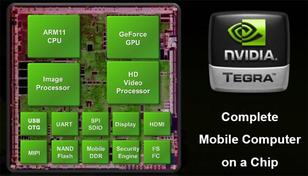ARM Cache Architecture: Types and Functions
Advertisement
What is Cache?
Cache is a small, high-speed memory located between the CPU and the main memory (RAM) that stores copies of frequently accessed data and instructions. Its main function is to improve system performance by reducing the time it takes for the CPU to access data and instructions from main memory.
It is typically located on the CPU chip (such as L1 and L2 caches) or close to the CPU (such as L3 cache) to minimize access time. Its main functions are as follows:
- Speed up data access by providing faster access times compared to main memory.
- Reduce memory access delays and alleviate bottlenecks associated with slower main memory.
- Improve overall efficiency by leveraging data access patterns such as temporal and spatial locality.
ARM Cache Architecture
ARM processors employ various types of caches to improve performance and efficiency by minimizing the time it takes to access frequently used data and instructions.
There are different types of cache used in ARM as explained below.

The two main parts of the ARM cache are the cache controller and the cache memory.
-
Cache Controller
-
Purpose: Manages the operations of the cache memory, including data retrieval, storage, and maintenance.
-
Key features are as follows:
- Address Translation: Works with the Memory Management Unit (MMU) to handle virtual to physical address translation.
- Cache Line Management: Manages cache lines or blocks, which are the smallest units of data transferred between the cache and memory.
- Access Control: Controls access to the cache to ensure that read and write operations are performed correctly and efficiently.
-
-
Cache Memory
-
Purpose: Stores frequently accessed data and instructions to speed up processing by providing faster access compared to main memory.
-
The key features are as follows:
- Speed: Provides much faster access to data compared to main memory, significantly improving overall system performance.
- Size: Typically smaller than main memory but optimized for speed. The size and organization of the cache memory are designed to balance between speed and cost.
-
ARM Cache Types
ARM processors employ various types of caches to improve performance and efficiency by minimizing the time it takes to access frequently used data and instructions.
The primary types of caches used in ARM processors include L1 cache, L2 cache, L3 cache and Specialized Caches (TLB, BTB, Trace Cache).
L1 Cache (Level 1)
-
L1 Instruction Cache (I-Cache):
- Purpose: Stores the most frequently accessed instructions.
- Location: Directly integrated into the CPU core.
- Size: Small in size (typically 16KB to 64KB).
-
L1 Data Cache (D-Cache):
- Purpose: Stores the most frequently accessed data.
- Location: Directly integrated into the CPU core.
- Size: Similar in size to the I-Cache (typically 16KB to 64KB).
L2 Cache (Level 2)
-
Unified L2 Cache:
- Purpose: Stores both instructions and data.
- Location: Situated between the L1 cache and the main memory, often shared among multiple CPU cores in multi-core processors.
- Size: Larger in size than L1 caches (typically 256KB to several MB).
L3 Cache (Level 3)
-
Unified L3 Cache (optional):
- Purpose: Provides an additional level of caching for both instructions and data.
- Location: Shared among all cores in multi-core processors, positioned between the L2 cache and the main memory.
- Size: Larger in size than L2 caches (can be several MB to tens of MB).
Specialized Caches
-
Translation Lookaside Buffer (TLB):
- Purpose: Caches recent virtual-to-physical address translations.
- Location: Associated with the Memory Management Unit (MMU).
- Characteristics: Enhances the efficiency of virtual memory address translation. Reduces the overhead associated with accessing the page tables in main memory.
-
Branch Target Buffer (BTB):
- Purpose: Caches the targets of recently taken branches.
- Location: Part of the branch prediction unit.
- Characteristics: Improves the efficiency of branch prediction. Reduces the penalty associated with mispredicted branches.
-
Trace Cache:
- Purpose: Stores decoded instructions or micro-operations.
- Location: Integrated within the CPU core.
- Characteristics: Bypasses the instruction decode stage for stored instructions. Enhances the instruction fetch and execution efficiency.
Advertisement
 RF
RF


